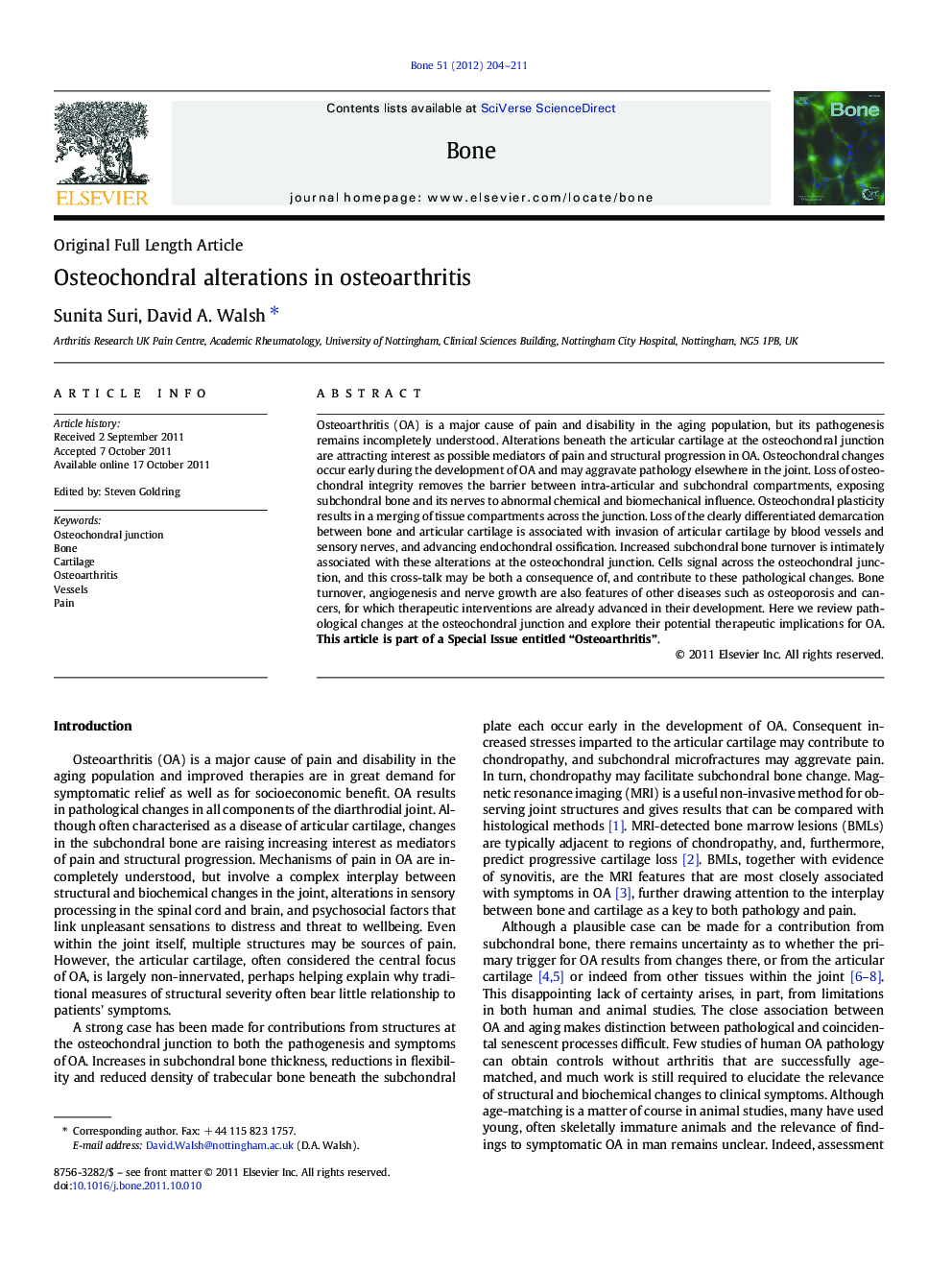| کد مقاله | کد نشریه | سال انتشار | مقاله انگلیسی | نسخه تمام متن |
|---|---|---|---|---|
| 2779315 | 1153266 | 2012 | 8 صفحه PDF | دانلود رایگان |

Osteoarthritis (OA) is a major cause of pain and disability in the aging population, but its pathogenesis remains incompletely understood. Alterations beneath the articular cartilage at the osteochondral junction are attracting interest as possible mediators of pain and structural progression in OA. Osteochondral changes occur early during the development of OA and may aggravate pathology elsewhere in the joint. Loss of osteochondral integrity removes the barrier between intra-articular and subchondral compartments, exposing subchondral bone and its nerves to abnormal chemical and biomechanical influence. Osteochondral plasticity results in a merging of tissue compartments across the junction. Loss of the clearly differentiated demarcation between bone and articular cartilage is associated with invasion of articular cartilage by blood vessels and sensory nerves, and advancing endochondral ossification. Increased subchondral bone turnover is intimately associated with these alterations at the osteochondral junction. Cells signal across the osteochondral junction, and this cross-talk may be both a consequence of, and contribute to these pathological changes. Bone turnover, angiogenesis and nerve growth are also features of other diseases such as osteoporosis and cancers, for which therapeutic interventions are already advanced in their development. Here we review pathological changes at the osteochondral junction and explore their potential therapeutic implications for OA. This article is part of a Special Issue entitled “Osteoarthritis”.
Journal: Bone - Volume 51, Issue 2, August 2012, Pages 204–211